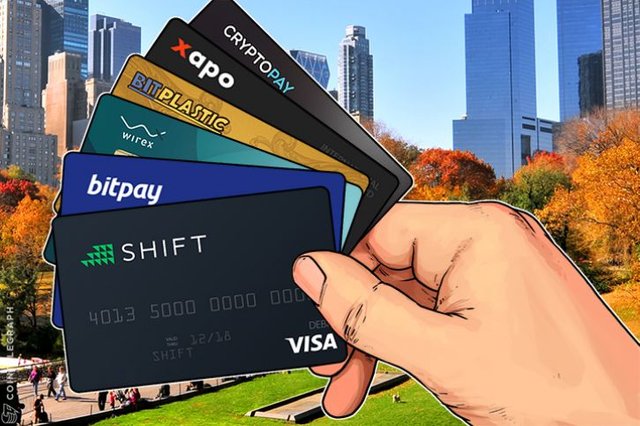6 Cards Battle for Bitcoin Supremacy, Bitcoin Debit Card Comparison Test

Today, we’ll take a look at six of the market’s best Bitcoin debit cards. We’ll look at where it all started and how far we’ve come, and then declare a winner.
Maybe, in the year 2025, the vast majority of the mainstream world will offer a Bitcoin payment option just as ubiquitously as they do PayPal. Rome wasn’t built in a day, and Bitcoin has made a lot of progress in seven years. Yet, Bitcoin’s advanced peer-to-peer payment system will have to ride the rails of the rather ancient 1950’s-based debit card technology until the world catches up to “The Future of Money.”
It is a clear case of taking one step back to take several steps forward, at some point in the future. If you have not yet seen it, Andreas Antonopoulos brilliantly explains this rather clumsy game of technological leapfrog through the course of human history here.
Eventually, the superior technology wins out, but we are still a few years away from that event horizon. Until that day comes, you and I are stuck using debit card technology, whose only technological update worth mentioning is a metallic chip on the front of some offerings. Many still do without, with little or no consequence.
The world still runs on plastic, so the Bitcoin business community has begun to offer more and better debit card options over the last three years. Let’s start with the first one to hit the market, back in 2013.
BitPlastic
If you go to BitPlastic’s website, their site’s graphics will mention, more than once, that it is “The world’s only Bitcoin debit card.” This was the first Bitcoin debit card I had ever seen, back in 2013, when the others were still a gleam in a corporation’s eye, but the world has changed a lot in three years. Bitplastic? Not so much. Their terms are still much the same as they always were, but it still has some solid market benefits that could prove useful, depending upon your needs.
It comes with a Bitcoin wallet, an online shopping cart to accept Bitcoin payments on your website, and a PayPal Exchange. The card does not require any identification to receive, taking any future identity theft through centralization of your information out of the equation.
Their web services are also TOR compatible. BitPlastic actually encourages you to use a fake name and TOR email to get started. Since it does not require your ID, your name is not printed on the card. This is a double-edged sword, as you can take money out of ATM’s anonymously, but it can be difficult to find an offline merchant who will accept a nameless card at checkout.
Many websites will also fail to process a card with no name. They do use Visa, the world’s largest merchant processor, so no demerits there, but if you lose the card, you’ve also lost your BTC. Cripes!
The terms of service are where BitPlastic starts to lose a lot of steam. Getting the card costs 0.25 BTC, which right now is almost $150 USD, and subject to change, so it is by far the most expensive card you can buy. Daily ATM withdrawal limits are still just $200 USD. ATM fees are low at $1.50 USD, but there is a 5% conversion fee for moving Bitcoin into cash on your card.
And it also does not appear to offer an option to use other global currencies, only the U.S. Dollar. America was the only real Bitcoin market for Bitcoin, back when BitPlastic began.
Being the first Bitcoin debit card is to be respected, but the market has passed the card by, not just the site’s graphics. BitPlastic should update all of the above.